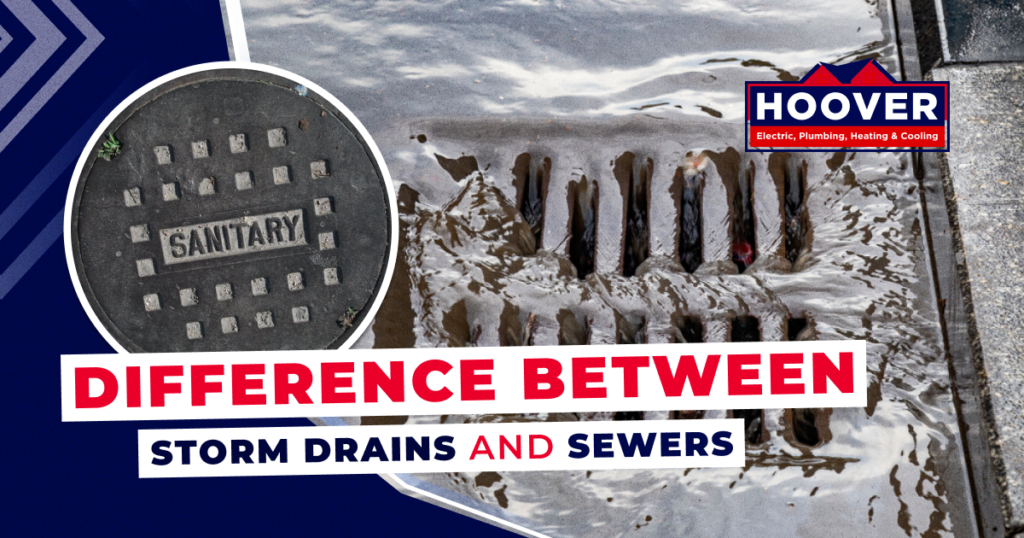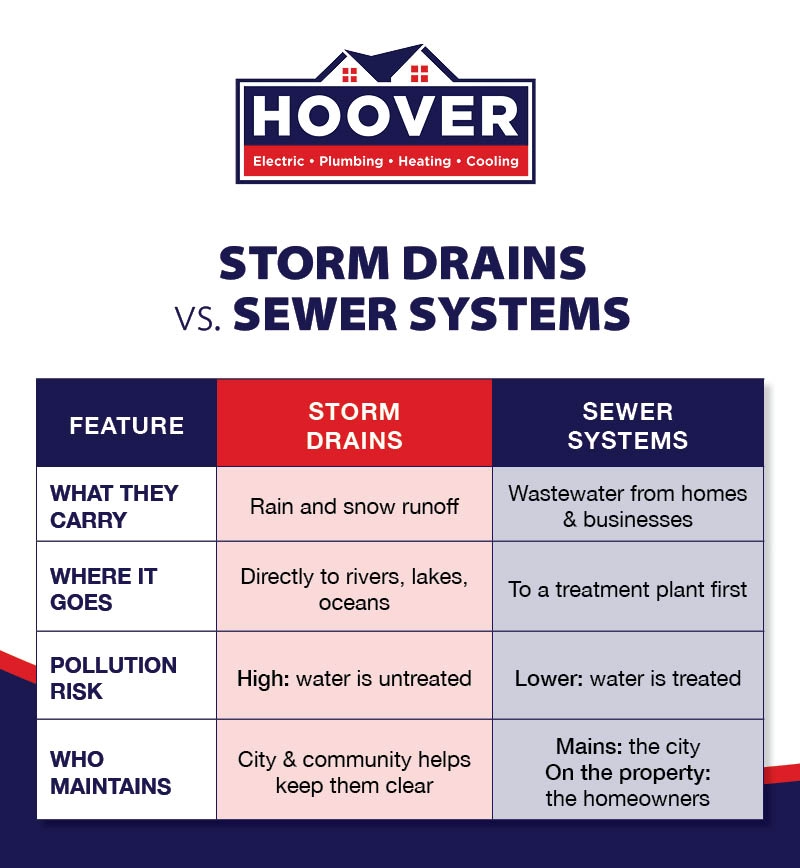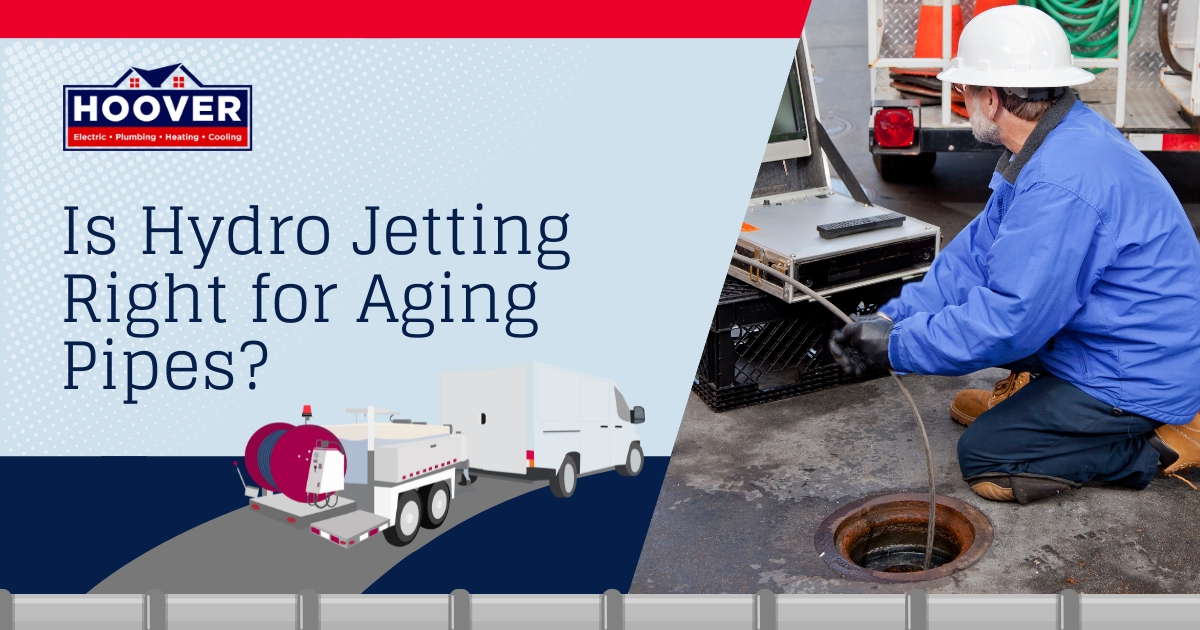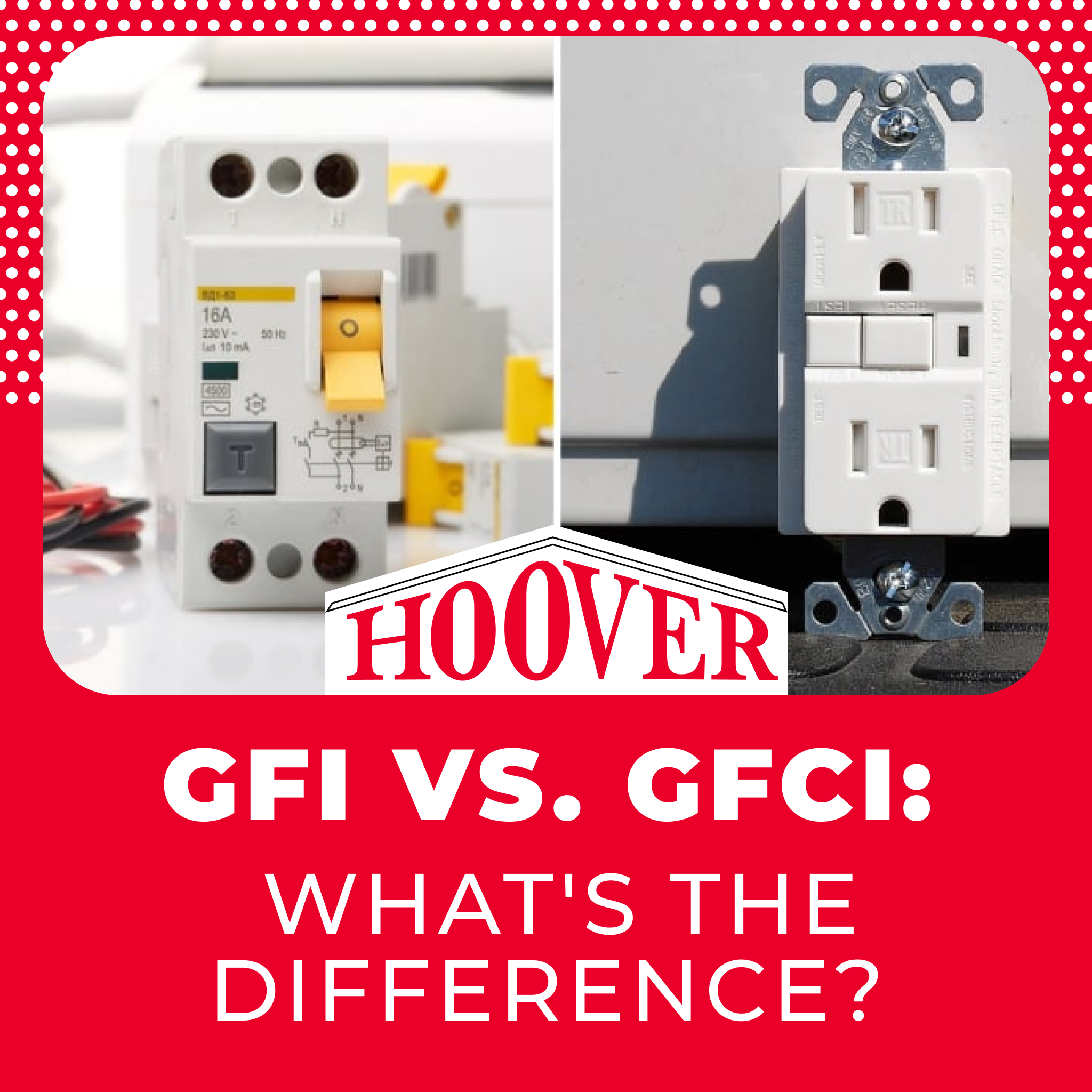
Homeowners in Troy, Detroit, and South East Michigan might think that storm drains and sewer drains are the same. While they do tend to look alike, most people don’t know how to tell one from the other. However, it’s important to know the difference between storm drains and sewers, as each one plays a vital role in how and where water goes when it enters a drain. The Hoover Electric, Plumbing, Heating, and Cooling team has insight into how homeowners can know the difference between these two things and why it’s important to prevent pollution, avoid backups, and more.
What Is a Storm Drain?
Definition & purpose
- Storm drains are common features found on streets, parking lots, and other city surfaces.
- These drains are important to help manage rainwater and melting snow by directing it away from streets and landscaping into streams, rivers, and other natural waterways.
- Using storm drains to redirect excess water keeps drivers and pedestrians safe by preventing flooding of these surfaces.
Where does storm drain water go?
- Storm drain water is collected and channeled through a network of underground pipes and ditches that flow toward rivers and other waterways.
- No filtration or treatment process is used before the water enters these lakes, rivers, or oceans.
- Stormwater runoff can negatively impact the environment since it moves chemicals, pesticides, oil, and other pollutants from the street directly into aquatic ecosystems.
Common problems with storm drains
- Storm drains can become clogged from leaves, trash, and debris, especially during periods of heavy or long-term rain.
- Over time, these blockages can cause flooding, posing a safety risk to drivers, homeowners, and pedestrians.
- Chemicals, cat litter, motor oil, and many other types of dangerous debris enter the water sources, causing harmful pollution.
What Is a Sewer System?
Definition & purpose
- A sanitary sewer takes tainted water from homes and businesses and runs it through an elaborate treatment system that removes debris and toxins before the water is returned to the water cycle.
- Dirty water from showers, toilets, bathtubs, sinks, and household appliances typically enters the sewer system. Water from septic tanks and industrial wastewater from car washes, factories, and other businesses is also routed to sewer systems and water treatment plants.
- Proper treatment of tainted wastewater is crucial before it re-enters the environment to prevent contamination and harm to animal and plant life.
Where does sewage water go?
- Wastewater travels to a treatment plant.via a network of pipes (sewers) and lift stations where it’s pumped through screens to remove debris before undergoing a rigorous treatment process.
- The wastewater is then treated through filtration, bacterial breakdown, and disinfection to clean it and make it safe for the environment.
- Once the water is treated to meet environmental standards, it’s discharged into local waterways. Staff monitors the water to ensure that it meets quality standards and to look for potential issues with the pH level or the presence of pollutants.
Common problems with sewer systems
- Sewer backups can occur due to major blockages or periods of heavy rain. These backups typically need to be addressed and fixed by a licensed plumber.
- Tree root intrusion in underground sewer pipes can cause backups or pipe damage.
- Overflows due to aging infrastructure are common in certain locations.
Key Differences Between Storm Drains and Sewers

Here’s some more information about the key differences between a storm drain vs a sewer system and how storm drains and sewers work.
What they transport
Storm drains capture and transport rainwater and snow runoff only, while sewer systems handle wastewater from homes and businesses.
Where the water goes
One of the biggest differences between stormwater drainage vs a wastewater system is where the water goes. Storm drains direct untreated water into natural bodies of water, and sewer systems direct wastewater to a treatment plant before releasing it into the environment.
Pollutants and environmental impact
Storm drains can cause water pollution if pet waste, trash, or chemicals enter the system. Sewer systems treat waste and pollution, but they can cause a problem if the system isn’t maintained properly.
Maintenance and responsibility
Storm drains are typically maintained by local governments, but they often require help from the community to keep them clean and clear. Sewer systems are maintained by municipal wastewater departments, but homeowners are responsible for maintaining their own sewer lines.
Common Myths About Storm Drains & Sewers
Here are some common myths about storm drains vs sanitary sewers.
Myth 1: storm drains and sewers are connected
- In most cities, storm drains and sewers are separate systems to prevent untreated sewage from overflowing into waterways during heavy rainfall. Separating these systems improves water quality and supports public health. If they’re connected, it can also cause major overflow and flooding.
- Sewer systems were combined in some older urban areas because it was a simple, cost-effective solution during the early days of infrastructure. These systems were common before large-diameter pipes and hydraulic excavators became commonplace.
Myth 2: it’s okay to dump household waste into a storm drain
- Dumping chemicals, motor oil, soap, and other household waste into storm drains is harmful because this toxic debris and runoff enters the environment and spreads pollution.
- Many jurisdictions impose legal penalties for illegally disposing of waste into storm drains.
Myth 3: sewer systems can handle anything
- Sewer systems and household drains can become backed up when homeowners flush wipes into the toilet, dump grease down the drain, or flush/dump other non-biodegradable items.
- To prevent backups, only flush toilet paper and dump regular liquids down your drains. Never put grease, oil, coffee grounds, eggshells, pasta, rice, paint, paper towels, feminine hygiene products, flushable wipes, or cat litter down the drain. Hoover offers free estimates for sewer inspections and repairs to keep your system running smoothly.
How Homeowners Can Help Maintain Drains & Sewers
Here’s how homeowners can help to maintain drains and sewers.
- Prevent storm drain pollution: Keep leaves, trash, and chemicals out of storm drains and use rain barrels or permeable surfaces to collect and reduce excess runoff. Report any clogged or overflowing storm drains to your local authorities.
- Maintain your sewer system at home: Avoid flushing grease, wipes, and other non-biodegradable items down the toilet or into your drains to prevent odors and clogs. Schedule regular sewer inspections to detect and prevent backups, and plant trees away from underground sewer lines to prevent damage from root intrusion.
Contact Hoover Today
A storm drain directs untreated water and rain runoff from streets and sidewalks to local waterways, while sewers direct household water to a treatment plant before it re-enters the environment. Understanding the differences between these two systems helps homeowners realize the importance of responsible water management to prevent flooding, pollution, and costly repairs. If you need a sewer inspection or repair for your South East Michigan area home, Hoover Electric, Plumbing, Heating, and Cooling can help. Contact us to schedule service today!


